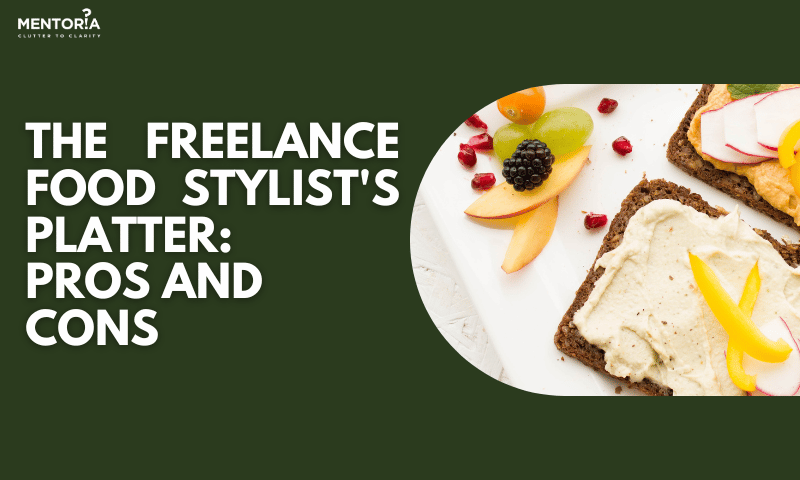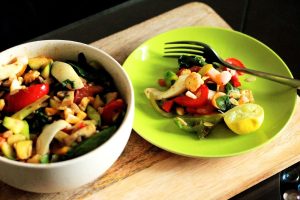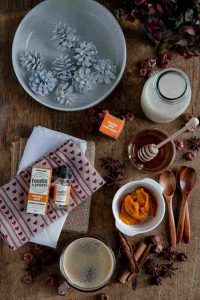The Freelance Food Stylist’s Platter: Pros and Cons

If you’re someone who has a passion for both food and aesthetics, you’re in for a treat. Imagine a world where your job involves arranging a slice of pizza just right, coaxing droplets of condensation onto a glass of iced tea, and making a humble salad look like a masterpiece. That’s the life of a freelance food stylist, a profession that combines culinary skills with an artistic eye. You’ll be responsible for creating visually appealing food displays that make people’s mouths water. It’s a challenging but rewarding job, and it’s perfect for creative and passionate people who love food and photography.
Who Is A Freelance Food Stylist?
Freelance food stylists are professionals hired by the food and advertising industry to meticulously craft and present food items for photography, videography, and marketing purposes. They excel in arranging, garnishing, and enhancing the visual appeal of dishes, ensuring they look appetising and enticing for various media platforms, such as cookbooks, advertisements, menus, and social media. Their expertise lies in using various techniques to maintain the freshness and appeal of food over extended photoshoots, making them an indispensable component of the culinary and marketing world.
Why You Should Consider Being A Freelance Food Stylist
- Creative Freedom: If you’re passionate about both food and art, food styling is your canvas. You have the creative licence to transform ordinary dishes into mouth watering works of art. From arranging strawberries in a seductive symphony to creating steamy pasta shots, the possibilities are endless.
- Diverse Projects: Freelance food stylists work on a variety of projects, from cookbooks and magazines to food advertisements and social media content. This diversity keeps the job fresh and exciting.
- Flexibility: Freelancing offers the flexibility to choose when and where you work. You can take on projects that align with your schedule and preferences, making it an excellent option for those seeking work-life balance.
- Culinary Exploration: Food stylists often collaborate with talented chefs, discovering new cuisines, cooking techniques, and ingredients along the way. It’s like a never-ending culinary adventure.
- Networking Opportunities: The food industry is vast, and as a food stylist, you’ll have the chance to build a network of chefs, photographers, and other professionals. This network can open doors to exciting opportunities.
The Challenges of Being a Freelance Food Stylist
- Unpredictable Income: Freelancing can be financially unstable. Your income may fluctuate, depending on the number of projects you secure and their payment terms. This requires careful financial planning.
- Competitive Market: The food styling industry is highly competitive. To stand out, you must continually refine your skills and build a strong portfolio. Breaking into the field can be challenging.
- Long Hours: Food styling involves meticulous attention to detail, which can be time-consuming. Long hours on set, especially during shoots, are common. It’s a demanding profession that requires patience and endurance.
- Equipment Costs: To excel as a food stylist, you’ll need quality equipment, such as cameras, lenses, lighting, and props. These can be expensive investments, especially when you’re starting out.
- Handling Food: While it might seem glamorous, handling food for hours on end can be messy and tiring. Plus, you’ll often be working under hot studio lights, which can be physically taxing.
Navigating the Freelance Food Styling World
Let’s dive into the details of what a normal day in the life of a food stylist looks like, the everyday skills they use, and what aspiring food stylists must learn to succeed in this career:
- Preparation: Food stylists often start their day by reviewing the client’s brief or discussing the shoot’s objectives with the photographer and art director. This helps them understand the desired style, mood, and message that the food needs to convey.
- Planning and Shopping: Food stylists may create detailed lists of ingredients and props needed for the shoot. They might spend part of their day shopping for fresh ingredients and sourcing appropriate props such as tableware, utensils, and backgrounds.
- Food Prep: This is a significant part of a food stylist’s day. They meticulously prepare and cook the food, ensuring it looks its best. This includes techniques like blanching, grilling, or using tweezers to arrange garnishes precisely.
- Styling: The actual food styling process involves arranging the food on plates or platters to create an aesthetically pleasing composition. Food stylists use various techniques to make the food look appetising, such as brushing it with oil for a glossy appearance or using garnishes strategically.
- Photography Collaboration: Food stylists work closely with photographers to achieve the desired shot. They consider factors like lighting, angles, and camera settings to showcase the food in the best possible way.
- On-Set Adjustments: Throughout the shoot, food stylists constantly monitor the appearance of the food. They may need to make real-time adjustments, like repositioning ingredients or adding steam to make food appear freshly cooked.
- Maintaining Consistency: If a shoot involves multiple dishes or takes place over several days, food stylists must ensure consistency in appearance. This includes matching the style and presentation of the dishes to maintain a cohesive look.
- Clean-Up: After the shoot, food stylists are responsible for cleaning up and properly disposing of the food. This includes coordinating with the photography team to ensure all shots are captured.
Pros, Cons, and Mentoria’s Support
In the world of freelance food styling, the pros and cons create a dynamic landscape for those passionate about crafting culinary artistry. While the freedom and creativity can be exhilarating, the challenges of inconsistent income and self-promotion are hurdles to overcome.
However, in your quest for success as a freelance food stylist, you don’t have to navigate this path alone. Mentoria, with its expert career guidance and resources, can be your partner on this culinary adventure. Whether you’re seeking tips on building your portfolio, managing your finances, or honing your marketing skills, Mentoria is here to equip you with the knowledge and support you need to thrive in the world of freelance food styling. So, embrace the freedom, sharpen your skills, and let Mentoria be your guide to a fulfilling career in this flavorful field.









